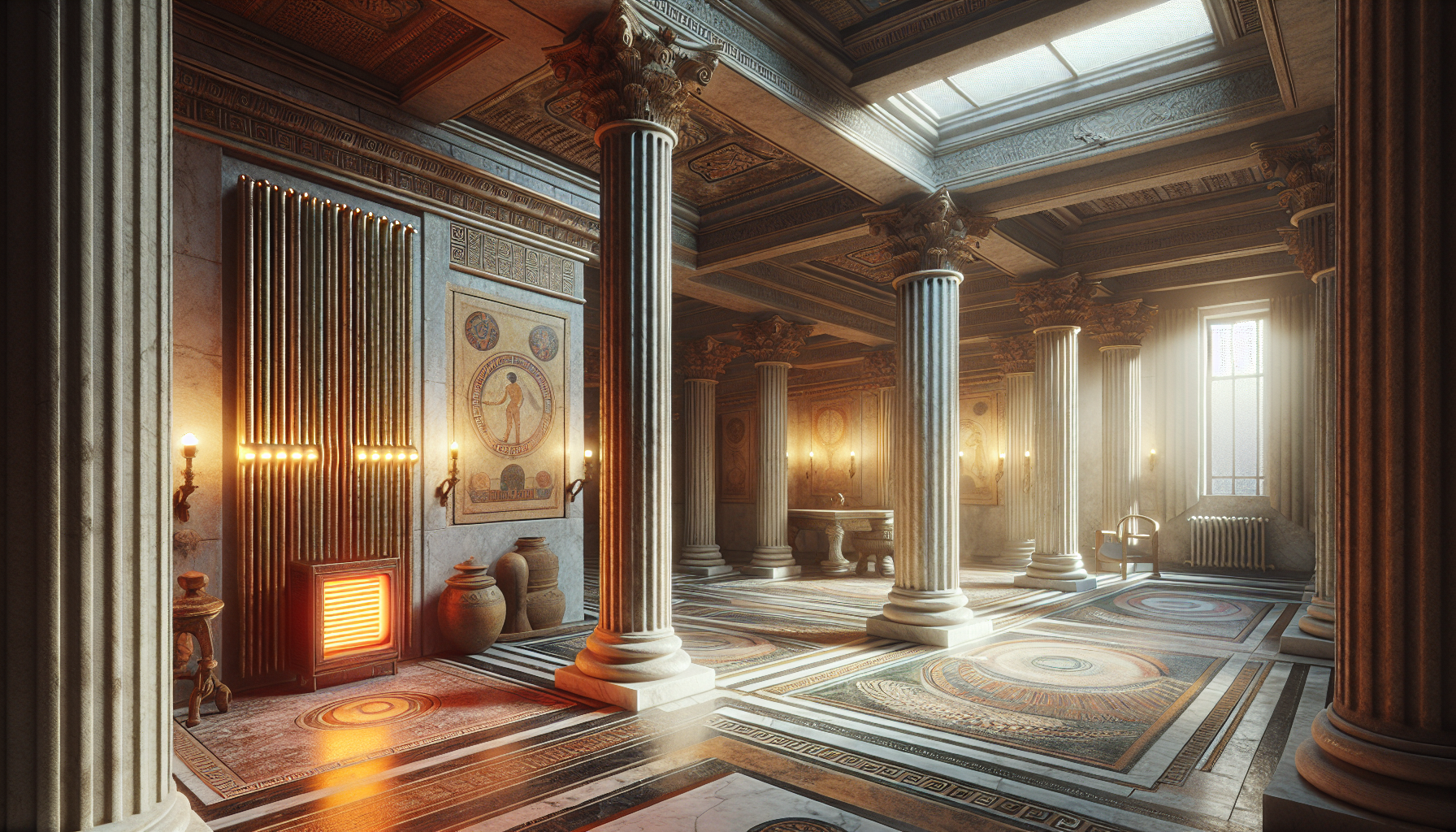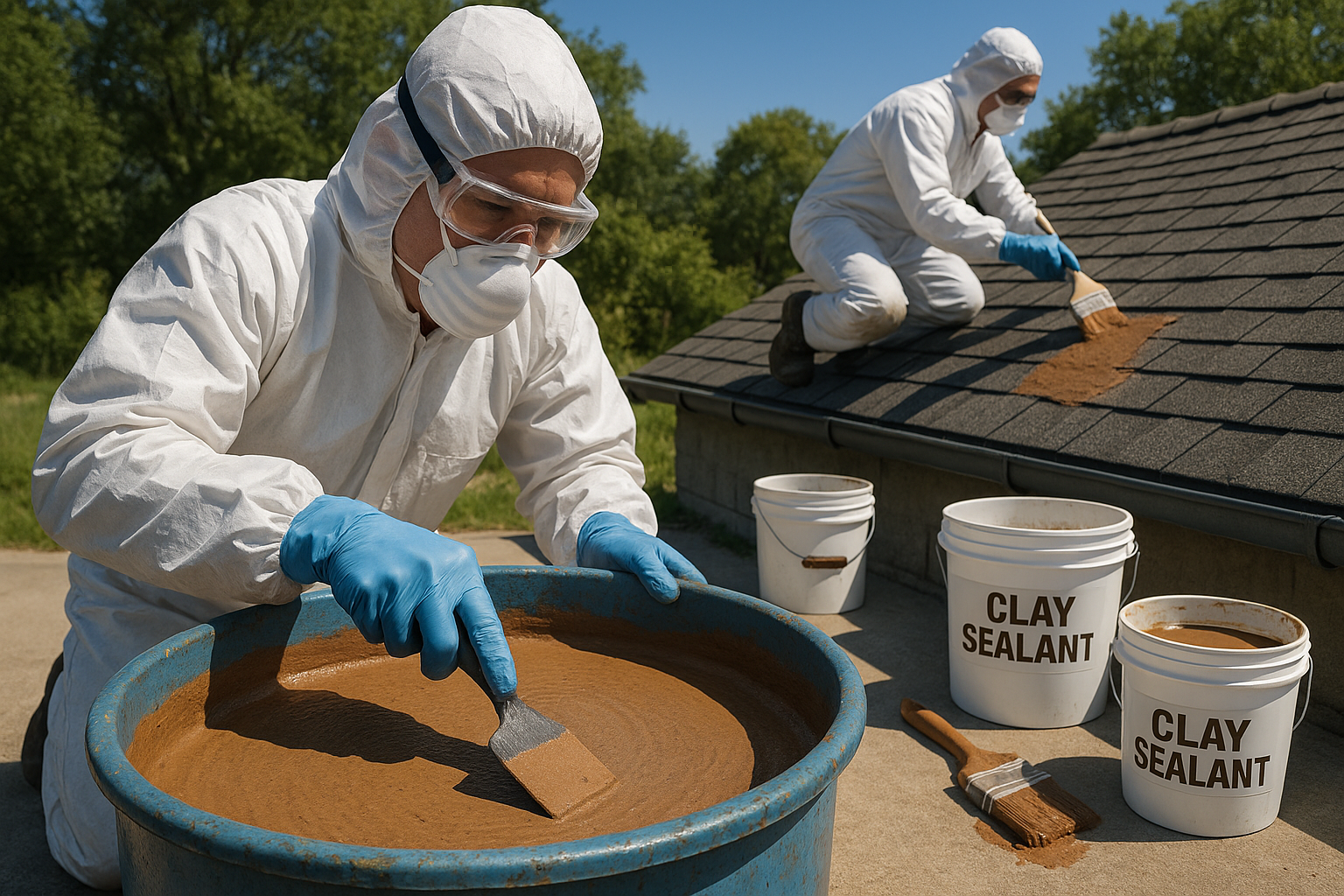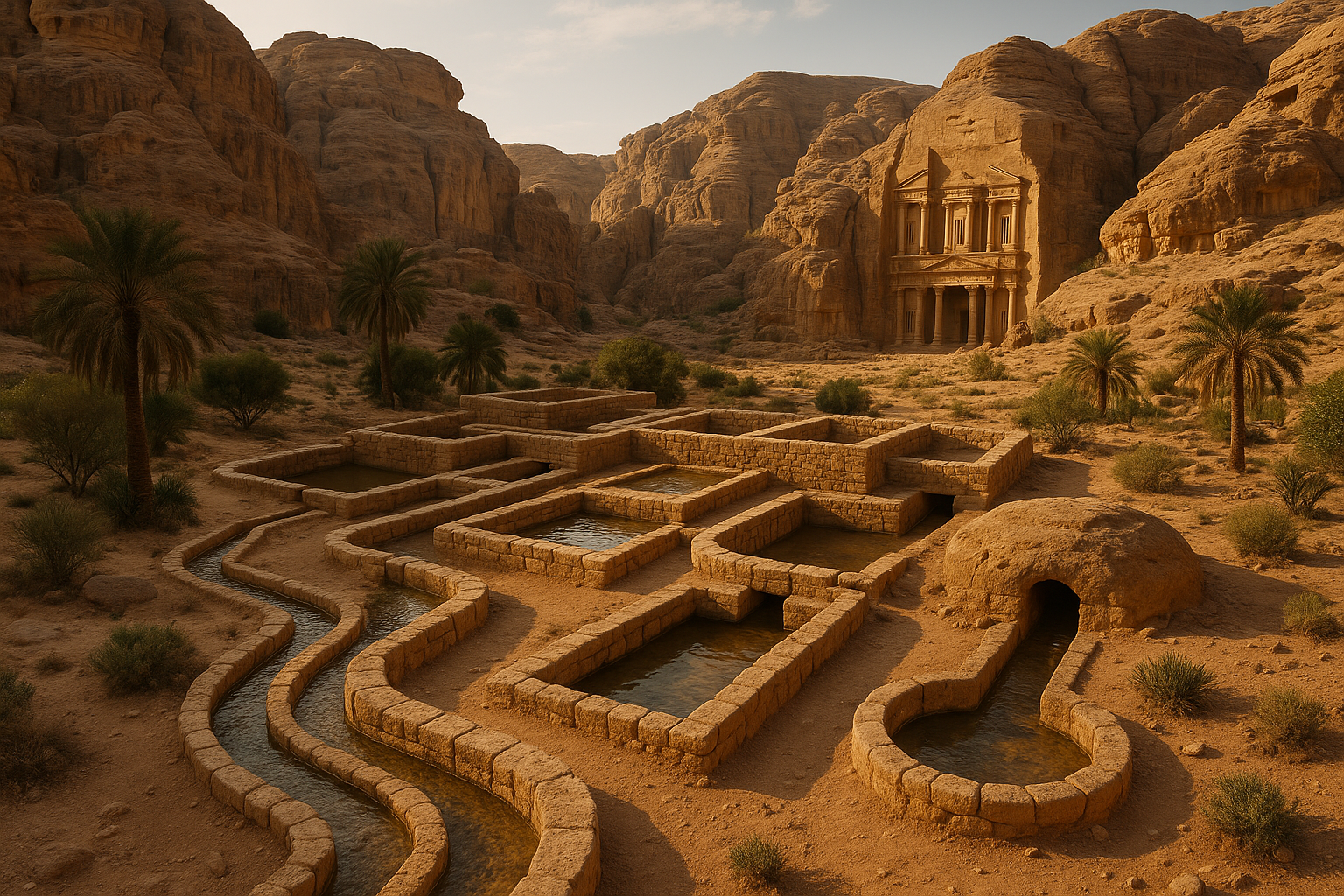Imagine stepping into a world where comfort and innovation intertwine, where the warmth beneath your feet tells a story of ancient ingenuity. Welcome to the fascinating realm of cozy living, a concept that has captivated human beings for centuries. Today, we embark on a journey through time to explore one of the most remarkable inventions of the ancient world: the hypocaust, the ingenious underfloor heating system of the Greeks. In an era where technology was but a whisper of what it is today, the Greeks mastered the art of creating an environment that embraced warmth and luxury. This ancient system not only transformed how spaces were heated but also laid the groundwork for modern heating solutions, illustrating the timelessness of human creativity and the quest for comfort.
Our exploration of the hypocaust will unveil the remarkable engineering principles behind its design, shedding light on how the Greeks harnessed the power of heat conduction and air circulation to create a seamless and efficient heating system. We will delve into the historical context of this invention, examining how it evolved and spread across ancient civilizations, influencing the Romans and beyond. Furthermore, this article will guide you through the cultural significance of the hypocaust, illustrating how it was not merely a technical achievement but a reflection of societal values and a catalyst for social interaction in communal bathhouses. The craftsmanship involved in constructing these systems, using materials that withstood the test of time, will also be a focal point, highlighting the Greeks’ profound understanding of architecture and engineering.
Understanding the Ancient Greek Hypocaust System
The ancient Greeks were pioneers in various fields, ranging from philosophy to architecture. One of their lesser-known but equally impressive innovations was the hypocaust system—a groundbreaking method of underfloor heating that predates modern central heating systems. This ingenious system provided warmth and comfort to many public baths and private homes, illustrating the Greeks’ sophisticated understanding of engineering and thermal dynamics.
The hypocaust system was essentially a precursor to modern radiant floor heating. It involved a complex network of spaces beneath the floor, through which hot air was channeled to warm up the rooms above. This setup not only kept the floors warm but also allowed for a more even distribution of heat throughout the space, enhancing comfort during the colder months. As you delve deeper into the mechanics of the hypocaust system, you’ll find a remarkable blend of simplicity and innovation that highlights the ingenuity of ancient Greek engineering.
The mechanics of the hypocaust system were surprisingly advanced for its time. The process began with the heating of air in a furnace located outside or beneath the main structure. This hot air would then be circulated through a series of hollow spaces created by stacking bricks or stone pillars. These pillars supported a floor that was elevated above the ground, creating a void where the hot air could flow freely. As the warm air circulated beneath the floor, it would rise and heat the room above, providing a consistent and comfortable temperature.
The Role of Architecture in the Hypocaust System
Architecture played a crucial role in the effectiveness of the hypocaust system. The materials used in constructing the floors and walls were selected for their ability to conduct heat efficiently. The use of tiles and concrete helped retain warmth, while the strategic placement of flues and vents ensured the optimal flow of hot air. This integration of architectural elements with the heating system underscores the Greeks’ ability to harmonize form and function, creating structures that were both aesthetically pleasing and highly functional.
Furthermore, the design of the hypocaust system was adaptable to different types of buildings, from opulent villas to public bathhouses. In larger structures, multiple furnaces might be used to maintain an even temperature throughout the building. This scalability allowed the system to be customized to meet the needs of various occupants, whether they were private individuals or large groups of bathers seeking relaxation and rejuvenation.
The hypocaust system’s impact extended beyond mere comfort. It represented a significant advancement in the way people experienced their living and communal spaces. By providing a reliable source of warmth, the system enabled year-round use of spaces that might otherwise have been too cold during certain seasons. This expanded the functionality of Greek architecture, contributing to a higher quality of life and demonstrating a profound understanding of environmental adaptation.
The Evolution and Impact of Hypocausts in Greek Society
The hypocaust system did not emerge in isolation. It evolved over time, influenced by earlier practices and innovations from other cultures. However, the Greeks made significant improvements that set their version apart. The implementation of the hypocaust marked a pivotal point in ancient Greek society, influencing not only architecture but also social dynamics and cultural practices.
Initially, hypocaust systems were primarily used in public bathhouses. These spaces were central to Greek social life, serving as venues for relaxation, exercise, and social interaction. The warmth provided by the hypocaust made these baths more inviting and enjoyable, encouraging their use even in colder months. As a result, the system played a key role in maintaining the social fabric of Greek communities, fostering connections and promoting physical well-being.
The adoption of hypocaust systems eventually extended to private residences, particularly among the affluent. For wealthy Greeks, having a hypocaust in their home became a status symbol, reflecting their social standing and appreciation for luxury. This shift not only demonstrated the system’s desirability but also its accessibility to those who could afford it, highlighting the divide between different social classes in ancient Greek society.
Technological Advancements and Cultural Exchange
The development of the hypocaust system was not solely a Greek achievement. It was the result of cross-cultural exchange and technological advancements that spanned different regions and eras. The Greeks were influenced by earlier systems developed by the Romans, who had pioneered similar methods of underfloor heating. This exchange of knowledge and technology was facilitated by trade and conquest, leading to the dissemination and adaptation of the hypocaust system across different territories.
As the system spread, it underwent further refinements and adaptations to suit local needs and conditions. This evolution highlights the dynamic nature of technological progress, driven by the interaction between different cultures and the continuous quest for improvement. The hypocaust system stands as a testament to the interconnectedness of ancient civilizations and their shared contributions to human advancement.
Moreover, the impact of the hypocaust system extended beyond its immediate functional benefits. It influenced the way people perceived and interacted with their environment, shaping architectural practices and societal norms. The system’s ability to provide comfort and enhance the usability of spaces underscored the importance of technology in improving quality of life, a concept that resonates with contemporary efforts to create sustainable and efficient living environments.
Modern Parallels and Legacy of the Hypocaust System
While the hypocaust system is a relic of the past, its principles and innovations continue to influence modern heating technologies. The concept of radiant floor heating, which is gaining popularity in contemporary architecture, shares many similarities with the ancient hypocaust system. By circulating warm air or heated water beneath the floor, modern systems provide efficient and consistent heating, echoing the methods used by the Greeks centuries ago.
In addition to its technical legacy, the hypocaust system offers valuable insights into the importance of sustainable and energy-efficient design. The Greeks’ use of available resources and their understanding of thermal dynamics serve as a reminder of the need to balance human comfort with environmental considerations. As we face the challenges of climate change and energy consumption, revisiting the principles of the hypocaust system can inspire innovative solutions that prioritize both efficiency and sustainability.
The enduring appeal of the hypocaust system also lies in its ability to connect us with our architectural heritage. By examining the ingenious methods of ancient civilizations, we gain a deeper appreciation for the ingenuity and creativity that have shaped human progress. The hypocaust system stands as a testament to the Greeks’ ability to harmonize technology with aesthetics, creating spaces that were not only functional but also beautiful.
Learning from the Past to Innovate the Future
The study of ancient technologies like the hypocaust system offers valuable lessons for contemporary architects and engineers. By understanding the principles and practices of past civilizations, we can develop new approaches to design that are informed by historical successes and failures. This knowledge can guide us in creating buildings and systems that are both innovative and respectful of our cultural heritage.
Moreover, the hypocaust system serves as a reminder of the importance of collaboration and cross-cultural exchange in driving technological advancement. Just as the Greeks built upon the innovations of their predecessors, we too can benefit from the exchange of ideas and experiences across different disciplines and cultures. This collaborative approach fosters creativity and innovation, leading to the development of solutions that address the complex challenges of our time.
In conclusion, the hypocaust system exemplifies the ingenuity and resourcefulness of ancient Greek civilization. Its influence can be seen in modern heating technologies and sustainable design practices, underscoring its enduring legacy. By exploring the history and mechanics of the hypocaust system, we gain valuable insights into the intersection of technology, architecture, and culture, inspiring us to continue the pursuit of innovation and excellence in our own endeavors.
Further Exploration and Resources
For those interested in delving deeper into the hypocaust system and its significance, there are numerous resources and opportunities for exploration. Museums and archaeological sites often feature exhibits on ancient Greek architecture and engineering, providing firsthand insights into the construction and operation of hypocaust systems. Additionally, academic publications and documentaries offer in-depth analyses of the system’s mechanics and impact, shedding light on its historical and cultural context.
Online platforms like YouTube also offer valuable resources for learning about the hypocaust system. For instance, the video titled “The Ancient Greek Hypocaust System Explained” from the channel “Ancient Architecture” provides a comprehensive overview of the system’s design and functionality. Watch it here.
| Feature | Ancient Greek Hypocaust | Modern Radiant Floor Heating |
|---|---|---|
| Heating Source | Furnace (hot air) | Boilers or electrical systems (heated water or electric coils) |
| Installation | Brick or stone pillars beneath the floor | Plastic tubing or electric cables embedded in flooring |
| Heat Distribution | Hot air flows through voids under the floor | Heat radiates through flooring materials |
| Energy Efficiency | Dependent on fuel availability and design | Highly efficient with modern insulation |
In summary, the hypocaust system is a fascinating example of ancient innovation with enduring relevance. By understanding its principles and exploring its modern parallels, we can appreciate the ingenuity of past civilizations and draw inspiration for future technological advancements. Whether through academic study, hands-on exploration, or virtual resources, the hypocaust system offers a rich tapestry of knowledge waiting to be uncovered.

Conclusion
As we draw to a close on this exploration of the ancient Greek hypocaust system, it becomes evident that the ingenuity of past civilizations continues to offer us profound insights into modern-day living. This fascinating journey through history has illuminated the brilliance of Greek engineering and their innovative approach to creating comfortable living environments. Let’s recap some of the key points discussed in this article.
We began by delving into the historical context of the hypocaust system, tracing its origins back to ancient Greece. This early form of underfloor heating was not only a testament to the Greeks’ engineering prowess but also an embodiment of their appreciation for comfort and well-being. The hypocaust system operated by circulating warm air beneath the floors of buildings, a method that was both efficient and revolutionary for its time. This pioneering approach to heating not only improved the quality of life for many but also laid the groundwork for future advancements in climate control technologies.
Next, we explored the structural and functional aspects of the hypocaust system. The construction involved a series of pillars or stacks that supported the floor, creating a hollow space where hot air could circulate. This innovative design allowed for even distribution of heat, ensuring a consistent temperature throughout the space. The Greeks’ ability to integrate architecture with functionality is a lesson that resonates even in today’s world, where sustainable and efficient design is of paramount importance.
Moreover, the article highlighted the cultural significance of the hypocaust system in ancient Greek society. Beyond its practical applications, the system reflected the Greeks’ commitment to public welfare and communal spaces. Public baths, for example, were not only centers for hygiene but also social hubs where citizens gathered, fostering a sense of community. The Greeks’ holistic approach to urban planning, which combined technological advancement with societal benefits, serves as an enduring model for contemporary urban development.
The implications of this ancient technology extend far beyond its historical context. In today’s world, where energy efficiency and sustainability are crucial, the principles of the hypocaust system offer valuable lessons. By revisiting these ancient methods, we can glean insights into creating modern heating systems that are both eco-friendly and effective. The resurgence of interest in passive heating and cooling techniques underscores the timelessness of these ancient innovations.
In conclusion, the ancient Greek hypocaust system is more than just a historical curiosity; it is a testament to human ingenuity and the enduring quest for comfort. As we navigate the complexities of modern living, there is much to learn from the resourcefulness and creativity of our ancestors. The hypocaust system exemplifies how past innovations can inform and inspire future advancements in technology and design.
We encourage you, our readers, to reflect on the lessons gleaned from this exploration and consider how they might apply to your own lives. Whether it’s through adopting more sustainable practices, appreciating the value of community, or simply marveling at the brilliance of ancient engineering, there’s something for everyone to take away. We invite you to share your thoughts and insights in the comments section below. 🌿
Finally, as you go about your day-to-day life, remember the innovative spirit of the ancient Greeks and let it inspire you to think creatively and act responsibly. Share this article with friends and family to spread the knowledge and appreciation of these ancient marvels. Together, we can continue to learn from the past to build a better future.
For further reading and to delve deeper into the world of ancient technologies, consider exploring reputable sources such as the British Museum’s online collection (https://www.britishmuseum.org/collection) or the resources available through the Society for the Promotion of Roman Studies (https://www.romansociety.org/), which offer extensive insights into the engineering feats of ancient civilizations.




